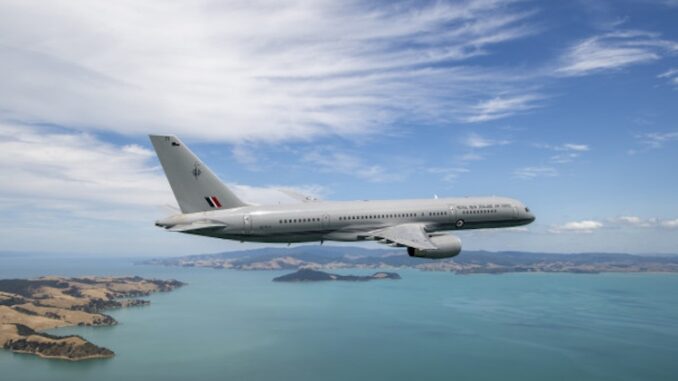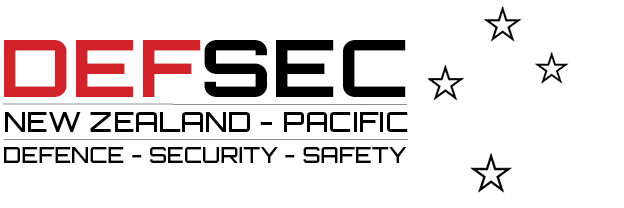
NATO members are expected to spend 2% of GDP on Defence. New Zealand isn’t spending enough, but how much is enough, and is 2% too much, writes Hon Dr Wayne Mapp.
The ongoing unavailability of the Boeing 757s can be seen as testament to way successive governments have failed to have effective and timely replacement programs.
Critical equipment is expected to remain in service well beyond the time it might be expected to be replaced. This is not a new phenomenon. For many decades New Zealand governments have failed to make timely decisions to replace worn out defence equipment, taking the option to run them well past the expected out of service date.
The defence force knows when it’s key capabilities will reach the end of their effective life. This has always been advised in the preparation of the various Defence Reviews of the last three decades. When it comes to the key assets of importance to our partners, particularly Australia, this is also known to them as well.
New Zealand has always spent less on defence than most of our defence partners. To some extent this is understandable, we are the most remote nation on earth, and that remoteness brings it own security. As a consequence, New Zealand has a smaller defence force than many nations of comparable size. This is most notably reflected in the numbers of people in uniform. It is also reflected in the amount of equipment they operate, be that personal equipment or large scale assets such as ships and aircraft.
Read this article in the digital edition:
What is less understandable is that the way that successive New Zealand governments have failed to ensure the key equipment of the relatively small defence force is replaced when it should be, rather than being kept in service beyond its useful life. This might be a failure to fully understand the proper level of funding that is required for the defence force that New Zealand actually has, or it could be that the government of the day simply has more pressing priorities.
This failure could result in three different outcomes. First, New Zealand could downsize the size of the defence force so that the available funding ensures that all parts of the defence force have the modern equipment that is expected of them. Second, the level of funding, both capital and operational, is increased to properly maintain the defence force we have. Third, we could continue to muddle on with the current level of funding, knowing full well there will be embarrassing failures of core capabilities, especially towards the end of the life of the major assets.
“A decision to go with the Australian choice for their Tier 2 combat vessels would enable a joint Australia New Zealand build program, as happened with the ANZAC frigates.”
The issue of how much New Zealand was really prepared to pay for its defence force last came to the fore in the early days of the Clark administration, when the future of the air combat force was in play.
The ultimate resolution of this issue was to disband the air combat force, on the basis of both cost and utility. This decision was to ensure that the balance of the defence force would be able to be relatively well equipped. To a substantial extent this objective has been reasonably well achieved, though there are caveats around the timing of decisions. The defence force has been able achieve simultaneous significant contributions to Timor Leste, Afghanistan and The Solomons.
Since the air combat force was disbanded in 2000, the overall shape of the defence force has been relatively stable. No-one now is seriously questioning whether the defence force should be further reduced in size. The current size and shape of the defence force is seen as a minimum credible force, whether in terms of combat or civil capabilities. There are no capabilities that are obviously of low utility, as was the case with the air combat force.
There have been significant re-equipment programs during the last two decades, including the NH 90 helicopters, the Project Protector fleet, the P8 Poseidons, the C130J Hercules and the large new tanker and logistics ship, HMNZS Aotearoa. The most recent acquisitions of HMNZS Aotearoa, the P8 Poseidon’s and the C130J Hercules have been relatively more expensive than the acquisitions of the decade of 2005 to 2015.
As a consequence, the expenditure on defence as a percentage of GDP, using the NATO measure, has increased slightly to 1.3% of GDP, with a peak in 2020 of 1.5% of GDP when the P8 Poseidons and C130J Hercules were purchased within a 12-month period.
Notwithstanding these various re-equipment programs, there has been an overall lag in the timing of the replacement of core capabilities. Typically, most of the key assets have had to remain in service up to a decade longer than the optimal time for their replacement, with the consequence that serviceability is significantly impaired.
In short, New Zealand is not devoting enough money as percentage of GDP to replace the core capabilities of the defence force at the appropriate time.
The next decade could well be more challenging than the last. There are two reasons. The first reason is that the single most expensive capability of the defence force, the naval combat force, will need to be replaced with the replacement ships needing to come into service by 2035. By then the existing ANZAC frigates will be nearly 40 years old.
The second reason is the expectations of our defence partners. All the NATO nations are expected to reach 2% of GDP as a minimum level of defence expenditure. Most of them are making good progress in this direction. New Zealand’s one ally, Australia, has significantly increased defence expenditure as a percentage of GDP, rising in the course of five years from 1.9% to 2.3% of GDP. The NATO nations and Australia have made these decisions, notwithstanding the economic difficulties faced by all OECD nations over the last few years.
New Zealand cannot reasonably expect to be completely immune from this trend. The Prime Minister will have been made aware of partner expectations in this regard. More than any other area of government expenditure, the views of security partners can be expected to lay some part in New Zealand’s decision on what to spend on defence.
New Zealand will not, and should not, aim to spend 2% of GDP on defence, as has become the norm for our defence partners. Both our geography and history militate against that. However, we should at least aim to replace our major defence capabilities in a timely fashion, rather than extending them beyond their reasonable life span, as we have done in the past.
What would be required to replace the core capabilities of the defence force in a timely manner?
In essence, it will mean more money allocated to defence, even if this won’t occur in the 2024 Budget, which will have been locked in by now. New Zealand’s current GDP is $400 billion. In 2023 defence expenditure was $5.3 billion or 1.3% of GDP. An increase of $400 million in the annual defence budget would lift defence spending to 1.4% of GDP.
This level of increase would almost certainly require more than one budget round to achieve. However, an increase of this size would ensure that all the current capabilities of the defence force could be replaced as and when required.
If New Zealand was prepared to make this commitment, there would be no need to continue the fly the 35 years old Boeing 757s for several more years. They could be replaced by much more modern aircraft.
There would be a guarantee that the ANZAC frigates would be replaced by appropriate ships, likely to be of the same type that Australia will select as their Tier 2 combat vessels. It is noteworthy that the four chosen options for the Australian Tier 2 ships do not include the United Kingdom designed Type 31 frigate.
A decision to go with the Australian choice for their Tier 2 combat vessels would enable a joint Australia New Zealand build program, as happened with the ANZAC frigates.
An intriguing alternative to an ANZAC approach would be the United Kingdom basing two type 31 frigates in New Zealand as opposed to the current plan of basing them in Australia as part of AUKUS, on the basis of New Zealand purchasing Type 31 frigates to replace the ANZAC frigates.
The Minister of Defence is expected to receive the Defence Review around the middle of this year. This will be the opportunity to reset national and international expectations of what is expected from New Zealand in terms of defence. While the Review is unlikely to have any impact on the 2024 Budget, it would be reasonable for the Review to make its influence felt in the Budgets of 2025 and beyond. If New Zealand is to have any chance in participating in the decisions on the Australian Tier 2 combat ship, the New Zealand government will need to act during this term of government.









